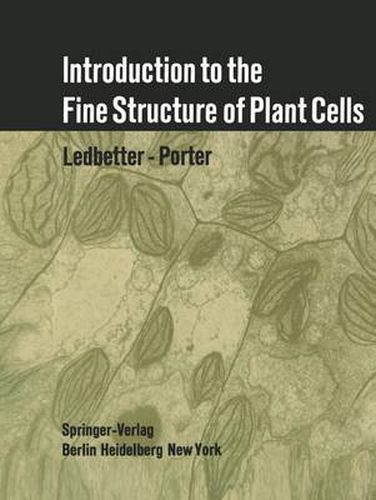Readings Newsletter
Become a Readings Member to make your shopping experience even easier.
Sign in or sign up for free!
You’re not far away from qualifying for FREE standard shipping within Australia
You’ve qualified for FREE standard shipping within Australia
The cart is loading…






This title is printed to order. This book may have been self-published. If so, we cannot guarantee the quality of the content. In the main most books will have gone through the editing process however some may not. We therefore suggest that you be aware of this before ordering this book. If in doubt check either the author or publisher’s details as we are unable to accept any returns unless they are faulty. Please contact us if you have any questions.
It is appro pi ate to the contents of this book to recall a few highlights in the history of plant cytology from its inception over three centuries ago. Robert Hooke in 1663 presented his observations of what he called
cells in cork and other plant parts and beautifully illustrated and described these in his classic
Micrographia published two years later. More detailed exploration of the cell and its contents awaited almost two centuries for Robert Brown’s discovery of the nucleus in 1831. Discoveries of other cell organelles followed, particularly in the latter part of the 19th and early part of this century. As is frequently noted each of these achievements was preceeded by advances in the resolution of the microscope. Now history repeats and recent developments in electron microscopy have given the biologist the opportunity to study cell morphology in far greater detail than at any time previously. Indeed, the resolution of the electron microscope is several hundredfold better than that available in the finest light microscopes. These advances in instrumentation plus improvements in the techniques of specimen preparation have made possible the ex amination of plant cells of almost any type. It is the resulting wealth of new information now accessible to the botanical cytologist that has prompted this publication. In this book we have brought together electron micrographs represent ing a number of cell types from higher plants.
$9.00 standard shipping within Australia
FREE standard shipping within Australia for orders over $100.00
Express & International shipping calculated at checkout
This title is printed to order. This book may have been self-published. If so, we cannot guarantee the quality of the content. In the main most books will have gone through the editing process however some may not. We therefore suggest that you be aware of this before ordering this book. If in doubt check either the author or publisher’s details as we are unable to accept any returns unless they are faulty. Please contact us if you have any questions.
It is appro pi ate to the contents of this book to recall a few highlights in the history of plant cytology from its inception over three centuries ago. Robert Hooke in 1663 presented his observations of what he called
cells in cork and other plant parts and beautifully illustrated and described these in his classic
Micrographia published two years later. More detailed exploration of the cell and its contents awaited almost two centuries for Robert Brown’s discovery of the nucleus in 1831. Discoveries of other cell organelles followed, particularly in the latter part of the 19th and early part of this century. As is frequently noted each of these achievements was preceeded by advances in the resolution of the microscope. Now history repeats and recent developments in electron microscopy have given the biologist the opportunity to study cell morphology in far greater detail than at any time previously. Indeed, the resolution of the electron microscope is several hundredfold better than that available in the finest light microscopes. These advances in instrumentation plus improvements in the techniques of specimen preparation have made possible the ex amination of plant cells of almost any type. It is the resulting wealth of new information now accessible to the botanical cytologist that has prompted this publication. In this book we have brought together electron micrographs represent ing a number of cell types from higher plants.